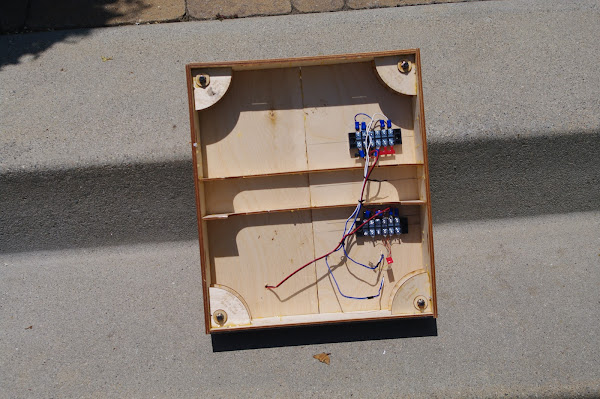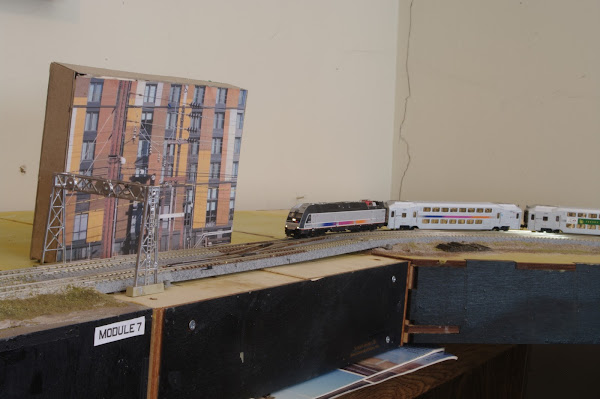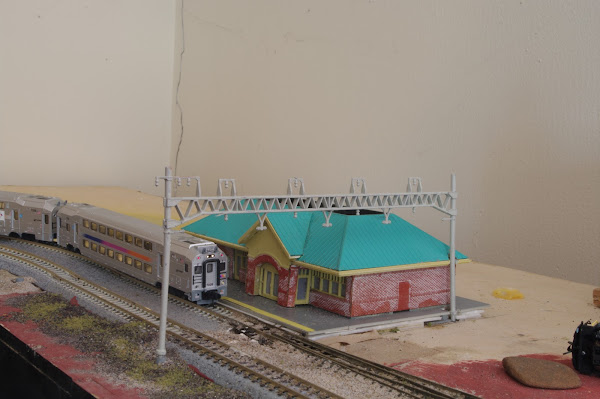Visible below the lower terminal strip in the photo is a tiny Digitrax DS51K1 stationary decoder that drives the Kato crossover.
It's worth pointing out once more that a crossover between the mains is simply not practical for normal T-TRAK standards. It would require a level of dispatching and discipline in a large T-TRAK meet, even with DCC, that I don't think ordinary model railroaders would be capable of. On the other hand, if T-TRAK is done at least partly for home use, it adds a great deal of flexibility and operating potential to a small layout configuration, temporary or semi-permanent. On the other hand, you can take your standard T-TRAK modules to a meet and leave the one with the crossover home. Here I've begun to incorporate the module with the crossover into an L-shaped temporary arrangement with the building flat I mocked up two weeks ago back on it. This shows that it's possible to operate a home-use T-TRAK layout even without a full oval that can incorporate push-pull style passenger operation at minimum, but I'm still playing with other ideas.Sunday, June 25, 2023
Progress On The Bare Table T-TRAK Module
I added a Kato crossover to the bare table T-TRAK module I posted about two weeks ago, with the building flat of the Washington DC Morrow Hotel.
In addition to laying track, I added my standard terminal strips beneath the baseboard. This is one plus to T-TRAK that nobody seems to recognize: you can use the Unijoiners to carry the DCC bus through each module and onto the next, but by using terminal strips to carry drops from each track, you can connect individual DCC-driven components like switch machine stationary decoders and NCE Illumimators with JST sockets for NCE Just Plug lighting features without any inter-module wiring.
Subscribe to:
Post Comments (Atom)




No comments:
Post a Comment